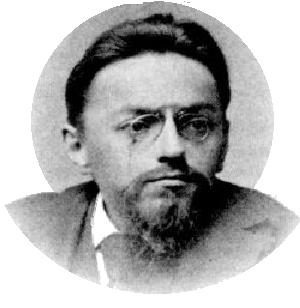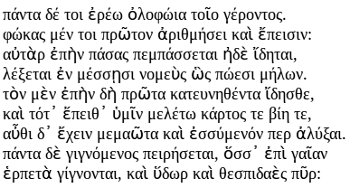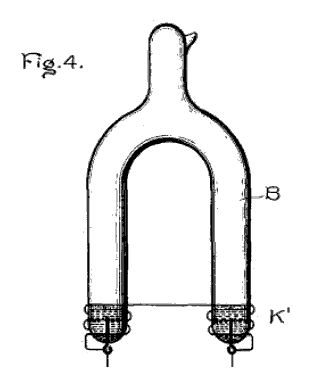Charles Proteus Steinmetz
May 3, 2012
Acclaimed
science fiction author,
Kurt Vonnegut, and I have several things in common. We both lived for short times in
Schenectady, New York; we both worked for the same company, Vonnegut as a writer in its
public relations department, and I as an
engineer for its
television station; and we both wrote science fiction novels, Vonnegut's quite well received, mine not yet published.
While I was in Schenectady, between my
sophomore and
junior years of
college, there was not much for me to do, so I would explore the city. In one of my explorations, I stumbled upon
Steinmetz Park. Since the Internet and
Wikipedia had not been invented, I had no easy way to discover the person for whom this park was named. It was several years later that I was introduced to the life of
Charles Proteus Steinmetz and wondered why he isn't better known.[1-4]

Charles Proteus Steinmetz
(Via Wikimedia Commons))
Charles Proteus Steinmetz was born as Carl August Rudolph Steinmetz on April 9, 1865, in Breslau (now,
Wrocław, Poland). He had the multiple
birth defects of
dwarfism,
hunchback, and
hip dysplasia, although from the photograph above you see nothing but a typical European professorial persona. Since Steinmetz's father and grandfather had similar birth defects, he decided he would never marry.
Steinmetz was a
prodigy in
physics and
mathematics, but his
Socialist sympathies forced him to flee
Germany to
Switzerland in 1888 before completion of his
Ph.D. at the
University of Breslau. In 1889, he emigrated to the
United States. Although the floodgates of American immigration were open at the time, it took the persuasion of friend and fellow émigré, Oscar Asmussen, to persuade the immigration officer that this strange little man was a mathematical genius who should be allowed entry into the United States.
It was upon emigration that Steinmetz decided to change his name. He decided that "Charles" sounded more American that "Carl," and he added Proteus as a reference to the
god of
Greek mythology,
Proteus (Πρωτευς).[2] Proteus would foretell the future to anyone who captured him, but he would change shape to avoid being captured. The shape-changing ability may have been an allusion to Steinmetz's unusual appearance. The fortune-telling part, aided by mathematics and theory, was actually what Steinmetz did.

Homer's Odyssey, Book IV, ll. 410-418. In this passage, Proteus is called "The Old Man" (γεροντος).
(Via Project Perseus). [5)]
Upon his arrival in the United States, Steinmetz was hired by a fellow German émigré, Rudolf Eickenmeyer, to design
electric motors and
power transformers at the Osterheld and Eickenmeyer Company,
Yonkers, New York.[1] During the course of his work, he discovered how
magnetic hysteresis of transformer
cores contributes to
electrical power losses. He presented his Law of Hysteresis in the December 8, 1891 issue of the journal, The Electrical Engineer, followed in January 19, 1892, by a presentation at a meeting of the
American Institute of Electrical Engineers in
New York City.[1]
The success of the Osterheld and Eickenmeyer Company was well known in electrical circles, so much so that
Edison's General Electric bought the company in 1893. General Electric got about two hundred important
patents, and it also got Charles Steinmetz. Steinmetz worked for a year at a General Electric plant in
Lynn, Massachusetts. He was then transferred to GE's main plant in Schenectady, New York.[1,3]
At General Electric, Steinmetz designed the generators for the
Niagara Falls power-generation station. GE built him a laboratory adjacent to his Schenectady home, where he performed experiments on
electrical insulators and
arc lights. A figure from his arc light patent appears below.[3]

Fig. 4 of US Patent No. 1,025,932, "Means For Producing Light," by Charles P. Steinmetz, May 7, 1912.
In this figure, liquid mercury is heated to form a vapor that's arced by the same power supply.
(Via Google Patents). [6)]
Steinmetz's Socialist leanings were apparent in his tenure on the Schenectady
school board, on which he served for six years, four of which as its head. He had more schools built, expanded sessions from half days to full days, hired school doctors and nurses, provided free food to impoverished students, and free textbooks for
elementary school grades. Learning disabled students, and
English as a second language (ESL) students were given special instruction.[3]
Steinmetz was more successful at
electrical engineering than others because of his application of mathematics. He coauthored a book, Theory and Calculation of Alternating Current Phenomena (1897), but found that few electrical engineers understood its contents.[3] He set about to change that by revising the electrical engineering curriculum at nearby
Union College, and he became head of its
School of Electrical Engineering through 1913. He served as a professor of electrical engineering and
applied physics at Union College through 1923, refusing to accept pay for his services.[1,3]
Charles M. Vest, President of the
Massachusetts Institute of Technology, told an interesting
anecdote about Steinmetz during MIT's June 4, 1999,
commencement.[2] I heard the story much earlier, so the source is buried somewhere in the literature. Steinmetz was hired by GE as a consultant to discover the cause of a performance problem in a very large
electrical generator. GE's own engineers didn't have a clue.
After several days of study, Steinmetz put an "X" with chalk on the outside of the generator. He instructed the technicians to open the casing at that point and remove a noted number of turns from the
stator winding. That fixed the problem. A generator of such a large size costs a considerable amount of money, and Steinmetz priced his work accordingly, $1,000, which was a princely sum in those days.
The GE management was stunned by the amount, and it asked for an itemized bill. Steinmetz responded thus,
1. Marking chalk "X" on side of generator: $1.
2. Knowing where to mark chalk "X": $999.
Today's engineers should have as much courage!
Steinmetz was elected president of the American Institute of Electrical Engineers when he was just thirty-seven. He was awarded honorary degrees from
Harvard University (1901) and Union College (1903). He was inducted into the
United States National Inventor's Hall of Fame in 1977.[1]
One of Steinmetz's most memorable
quotations is as follows:
"Scientific theories need reconstruction every now and then. If they didn't need reconstruction they would be facts, not theories."
References:
- Tom Flynn, "Charles Proteus Steinmetz, Inventor," Yonkers History Web Site.
- Charles Proteus Steinmetz, German-American mathematician and engineer (1865 - 1923), North Dakota State University Electrical & Computer Engineering Web Site.
- Doris Kilbane, "Charles Proteus Steinmetz: Genius, Forethinker," Electronic Design, October 20, 2006, p. 76.
- Vaughn D. Martin, "Charles Steinmetz, The Father of Electrical Engineering," Nuts & Volts, Bonus Web Feature, April, 2009, pp. 1-5.
- Homer, "The Odyssey," with an English Translation by A.T. Murray, Ph.D., in two volumes (Harvard University Press, Cambridge, MA.; William Heinemann, Ltd., London), 1919.
And I will tell thee all the wizard wiles of that old man. First he will count the seals, and go over them; but when he has told them all off by fives, and beheld them, he will lay himself down in their midst, as a shepherd among his flocks of sheep. Now so soon as you see him laid to rest, thereafter let your hearts be filled with strength and courage, and do you hold him there despite his striving and struggling to escape. For try he will, and will assume all manner of shapes of all things that move upon the earth, and of water, and of wondrous blazing fire.
- Charles P. Steinmetz, "Means For Producing Light," US Patent No. 1,025,932, May 7, 1912.
Permanent Link to this article
Linked Keywords: Science fiction; Kurt Vonnegut; Schenectady, New York; public relations; broadcast engineer; television station; sophomore; junior; college; Steinmetz Park; Wikipedia; Charles Proteus Steinmetz; Wikimedia Commons; Wrocław, Poland; congenital disorder; birth defect; dwarfism; hunchback; hip dysplasia; prodigy; physics; mathematics; Socialist; Germany; Switzerland; Doctor of Philosophy; Ph.D.; University of Breslau; United States; Greek mythological figure; Greek mythology; Proteus; Project Perseus; electric motor; power transformer; Yonkers, New York; magnetic hysteresis; magnetic core; electrical power loss; American Institute of Electrical Engineers; New York City; Thomas Edison; General Electric; patent; Lynn, Massachusetts; Niagara Falls power-generation station; electrical insulator; arc light; Google Patents; school board; elementary school; English as a second language; electrical engineering; Union College; School of Electrical Engineering; applied physics; Charles M. Vest; Massachusetts Institute of Technology; anecdote; commencement; electrical generator; stator winding; Harvard University; United States National Inventor's Hall of Fame; quotation.